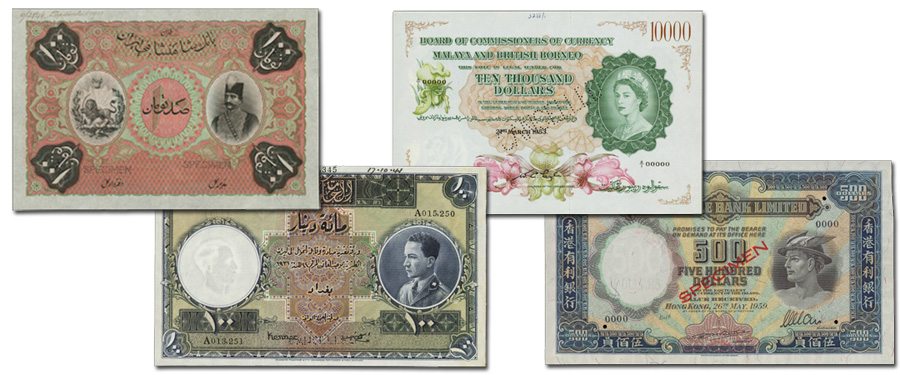
The market for collectible worldwide currency is far more accepting of specimen notes than the United States Currency market. These often perforated, punch canceled and overprinted notes are typically far more scarce than their issued counterparts, although in many cases they are the only way to illustrate a design within a collection. Larger printers such as the American Banknote Company, Thomas de la Rue, Bradbury Wilkinson and Waterlow and sons are largely responsible for the specimen notes known today. These printers kept detailed records and archives of their work and slowly these treasures have been finding their way into collector hands. The printers also often contracted carriers to travel with large booklets containing specimen notes to regions where the notes were circulating. The booklets were used mostly at banking institutions with counterfeit identification a top priority. Examples from these books, often color trials, make up a sizable portion of the most scarce specimen designs known.
Although there are many collecting paths one can explore in worldwide currency, these specimens often become part of the journey. The higher denominations bills of the late 19th and early to mid 20th century are often extremely rare or even unknown in issued form, rendering them practically uncollectable. This is where specimen notes gain popularity as they make several of these highest denomination designs available. Specimens also have the large benefit of not being intended for circulation and as a result the quality is typically fantastic. They are often configured the same way with punch cancels at the signature panels, overprints and specimen specific serial numbers. Other attributes can include perforations, annotations, color varieties, separation of face and back, and more. Aside from the larger printers mentioned above, many others also produced specimen notes. Often with modern era notes, they can command significant premiums.





